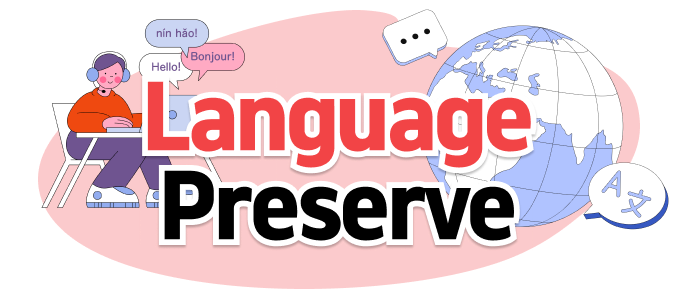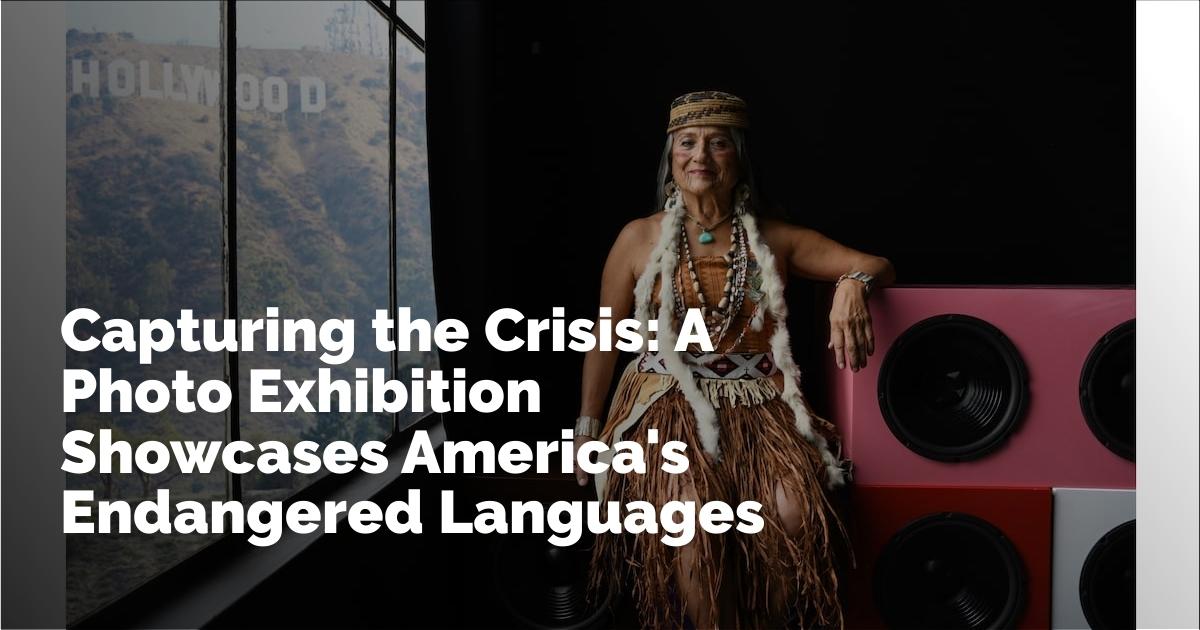The Fragility of Endangered Languages in the U.S.: A Journey Through Identity and Preservation
Languages hold a profound place in the shaping of our identities—their nuances encompassing the breadth of human cultures, histories, and personal experiences. However, the survival of many languages is at risk, especially in a culturally diverse landscape like the United States, where countless languages are spoken but few are protected. This blog article explores the inspiring work of B.A. Van Sise, a photojournalist and poet dedicated to capturing the essence and fragility of these endangered languages across North America.
Language Diversity in the United States
The United States, a nation without an official language, nonetheless primarily communicates in English, used by a staggering 241 million people as recorded in 2019 census data. As the lingua franca, English is understood by 95% of the population. Spanish, known for its widespread daily usage by close to 63 million people, stands as the second predominant language. The diversity continues with Chinese, spoken by four million, and other languages such as Tagalog, Vietnamese, and Arabic—all contributing to a spectrum of cultural dynamics.
These numbers, however, only scratch the surface as an extensive array of lesser-known languages are on the brink of extinction. A language spoken by just a handful of people can be indistinguishable in large demographic data, but each acts as a vital thread in the complex tapestry of American identity.
B.A. Van Sise's Dedication to Language Preservation
B.A. Van Sise embarked on an extensive mission to photograph and document the endangered languages across the sprawling nation. Of Italian descent with Belgian and French family roots, he represents the quintessential American story of multicultural origins. His driving passion for languages—a passion that led him to learn Ladino from his Jewish ancestors expelled from Seville—fuels his quest. For Van Sise, language isn't merely a tool for communication; it is a vessel carrying the essence of identity, tradition, and cultural longevity.
Over three years of focused work, Van Sise traversed the American landscape, capturing the voices and faces that keep these fragile languages alive. The outcome is a compelling collection titled "On the National Language: The Poetry of America’s Endangered Tongues," showcased both in a newly published book and at an exhibition in the Skirball Cultural Center in Los Angeles, inviting the world to explore this vital subject until March.
Capturing the Present for Future Generations
During this journey, Van Sise realized that his project was fundamentally about looking forward, about preserving a path for future generations rather than reminiscing about the past. This realization shifted his focus from traditional cultural leaders to individuals actively nurturing their language in everyday life. He photographed a diverse group—teachers, homemakers, and students—everyday heroes ensuring the survival of linguistic heritage.
This choice set his work apart from politically tied organizations that often contribute to preserving these languages. Van Sise wanted authenticity—a true representation of the living, breathing culture rather than a curated, political display. It was through this lens that he showcased 50 potent portraits, each narrating the resilience of maintaining language amidst overwhelming modernity.
The Challenges of Language Preservation
Van Sise's work vividly illustrates that preserving endangered languages goes well beyond linguistic interest; it is imperative for cultural preservation. With the backdrop of an ever-changing world empowered by dominant cultures, the strength needed to sustain such languages is immense. Languages like Navajo still boast speakers well into the thousands, but others like Tongva, O’odham, and Koyukon voice their words through just a few speakers dwindling in California's arid lands.
The painstaking efforts required to record and preserve these languages are frequently disrupted by external pressures—power struggles, warfare, and economic interests pose the primary threats to their survival. As Van Sise articulates, the delicate composition of the U.S. and its lack of a robust central linguistic authority amplify these risks.
The Role of Indigenous and Diasporic Languages
A staggering 80-90% of endangered languages in the United States belong to Indigenous peoples. These languages tell stories, express philosophies, and reveal a unique worldview imbued with centuries of tradition. Beyond Indigenous tongues, languages reflecting the Black diaspora such as Haitian Creole, alongside others rooted in Judaic traditions, also share the tightrope between survival and extinction. Van Sise estimates the number of high-risk languages in the U.S. rests near 120—a significant portion, considering the myriad originally spoken.
Americans, grappling with a quest to reconnect with their cultural origins, often find solace and identity in these languages. Van Sise emphasizes this intrinsic pull towards genealogy and linguistic ancestry as a core facet of American cultural consciousness.
Political Impact on Language Survival
The entering Donald Trump administration raised concerns about the potential erosion of efforts to protect linguistic diversity. Van Sise voiced apprehension that increased conservative policies might detract from promoting a multiethnic understanding of America, critical to language revitalization. Policies favoring industrial exploitation on sacred lands and reservation-drilling could signal tough roads ahead.
In his commentary, Van Sise remains cautiously optimistic, suggesting that while these hurdles are formidable, the change may not be permanent. He believes in the resilience of those committed to cultural preservation, despite daunting political changes.
Venturing Beyond Borders
Although focused within U.S. borders, Van Sise's ambition stretches beyond, with intentions to explore indigenous expressions in Canada and Mexico. His collection even nods to Nahuatl, a language of significant historic and cultural stature primarily spoken by the Aztecs, whose presence, though predominantly in Mexico, seeps into certain U.S. regions, especially California.
Unfortunately, due to time constraints before his book's conclusion, he couldn't document languages from Hawaii—a loss to his expansive vision. As his attention shifts to a new project on the lives of U.S. citizens weathered by years in incarceration, his exploration of Hawaii's languages remains an unfulfilled chapter in his journey.
Through a rich tapestry woven with portraits and stories, B.A. Van Sise's work stands as a testament to the undeniable importance of linguistic preservation. It inspires dialogue surrounding identity, prompting us to reflect on the elements of culture we might lose if we fail to acknowledge and support the diversity within our languages. The exhibition at the Skirball Cultural Center offers an opportunity to witness these expressions firsthand, bringing attention to an otherwise ephemeral facet of cultural identity.
출처 : Original Source

